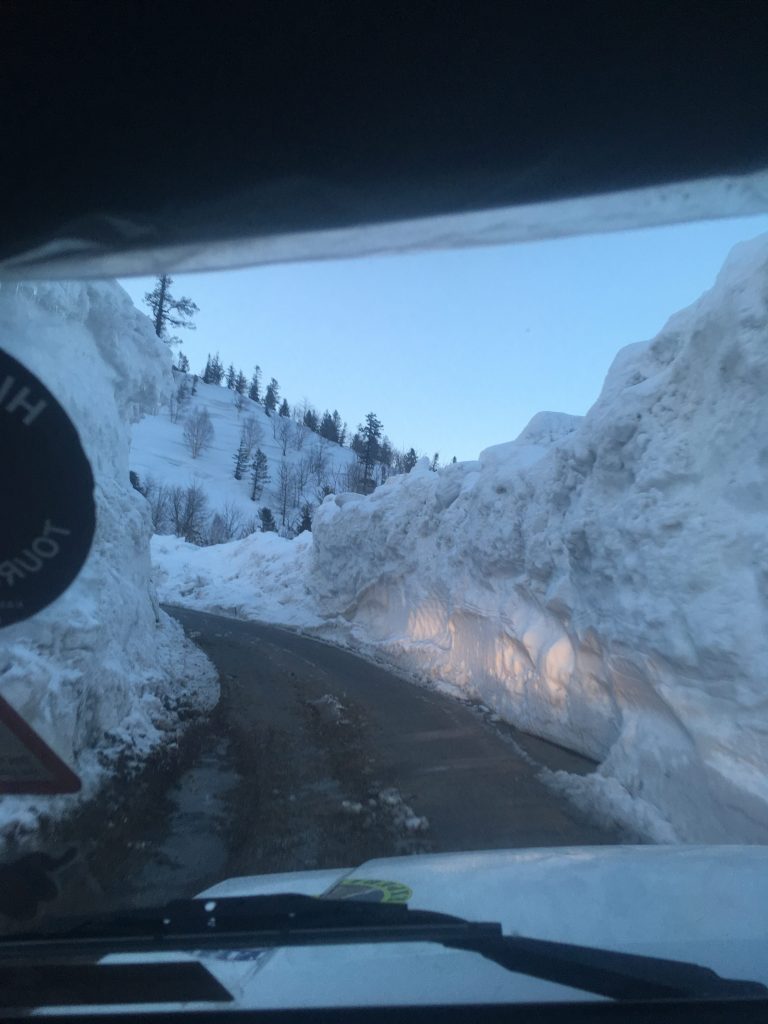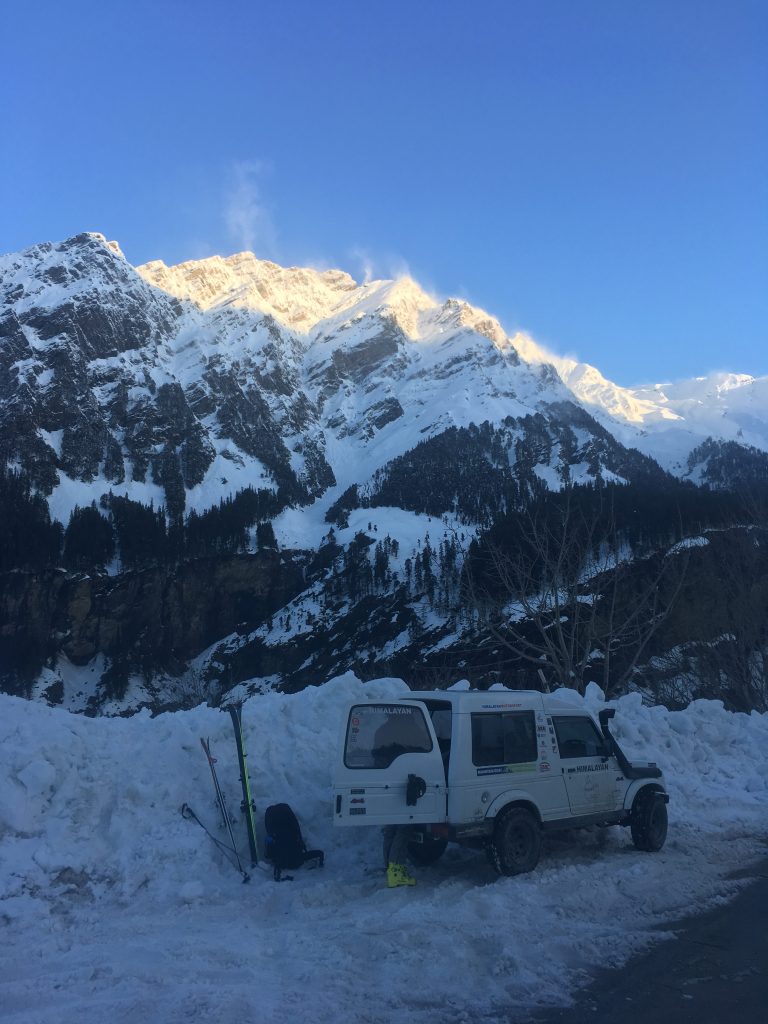After two days of shelter from dreary rain in Manali, we expected sunny weather on Tuesday based on all of the forecasts. The weather forecasts in this part of India are generally not good. They are only general, relying on synoptic guidance from models with scales that don’t capture surface conditions in these deep valleys surrounded by 3000 m or more of vertical relief. Still, all the forecasts predicted sunny conditions, unbelievably light winds (5 km/hr at 4000m), and freeze-thaw temps, so we banked on them and left the Manali Inn at 5 am.
Our plan was to drive up the Rohtang Pass road as far as we could, park, then make our way up as high on Gulaba peak as possible. Ashkay at Bhuntar Bike Rentals, who rented us our Jypsy, told us that the road was open to the Gulaba checkpoint. Our plan was to check out the conditions up higher and sample at one of the two sets of waypoints pre-chosen in the GPS for sampling. One set was in between the switchbacks of the pass, the other was higher up.

Starting out at 5 am was a pleasant driving experience. The roads were completely empty. Stray dogs were sleeping in the middle of the highway just north of the Manali Inn. However, crossing the first way one bridge near Manali across the Beas, we noticed the Tibetan prayer flags blowing pretty hard from a stiff north wind. Uh oh.
We continued on up towards Solang, turned at Palchan towards the pass, and passed through Kothi. The walls of snow started looking impressive, over 4 m in some of the wind drifted areas, and they loomed over the Jypsy since only a single lane was cleared.

In contrast to Solang, there was barely any trash, dung, or other signs of “snow play” on the Rohtang road. Eventually, we hit the closure for the Gulaba checkpoint, marked with a chewed up sign in Hindi.

We had to go in reverse back to the last pull out, maybe 0.75 km back, marked with some ashes and a discarded box from a scotch bottle. We parked there.

We put our skis on our backs and began walking up the road. It was very windy and a lot of sprindrift was coming off the peaks. Instead of following the Spooner recommendation of making a straight shot towards the peak, we decided to continue walking on the road past the checkpoint which was plowed for at least another 300-400 vertical m. As we got higher, the winds got worse. By the time we put our skis on and started skinning, it was hard to stand up in places because of the wind. We wound our way up through open fields and a slopes of Himalayan Oak, an evergreen whose leaves were being blown off by the now gale force winds.
By the time we got to the first set of waypoints for sampling at about 3300 m, which we planned on passing through on our ascent, we decided that we weren’t going any higher. The wind transporting the new snow was coating us and making it miserable, and potentially dangerous avalanche-wise on the loaded s. facing slopes.


We collected some depths and dug a 3 m pit. We started sampling, but the blowing snow was burying everything and combined with the warming air temperatures and sun, soaked us. After a few density cuts, we decided that we’d had enough and bailed. The snow conditions were mixed bag of cold new snow, moist new snow, and hard scoured surfaces. Not great.
We skied down a couple hundred meters and found a flat spot in between the road switchbacks where the new snow was not blowing around. We did our sampling there instead. It wasn’t pristine like the upper slopes, but a lot less miserable and safer.

By the time we finished with the second pit, it was about 2:30 pm. Our second pit was close to the Jypsy, so we quickly skied out and got in the car to prepare for the epic afternoon traffic jam.
The drive down to Kothi was surprisingly mellow, with only a few vehicles stopped at pullouts for snow play. We got stuck behind some donkeys in Kothi.
South of Palchan, traffic picked up and then we stopped. Cabs started turning around. Yet another landslide was blocking the road. We had to turn around, fight for a spot in line and cross over the Beas to go around the landslide, then cross back over a sketchy suspension bridge.
As we feared, all of this turned into a very long drive back to the Manali Inn, about 2.5 hr. We arrived exhausted as usual, drank some overpriced beers, ate some runny Indian food at our deserted buffet upstairs below the dance club, and went to bed.
Tomorrow the forecast is for clear weather again, but the freezing level shoots up to 4500 m. Rather than risking another life threatening experience on some of the worst roads in the world, we are going to hang out in the Manali area for our last day. It’d be nice to bag a peak, but there are already point releases visible on nearly every peak. The warming combined with the potential for more landslides and the inevitable traffic are too much.
One addendum to our earlier post on Pataslu is a YouTube video the epic wet avalanche that we had to cross.